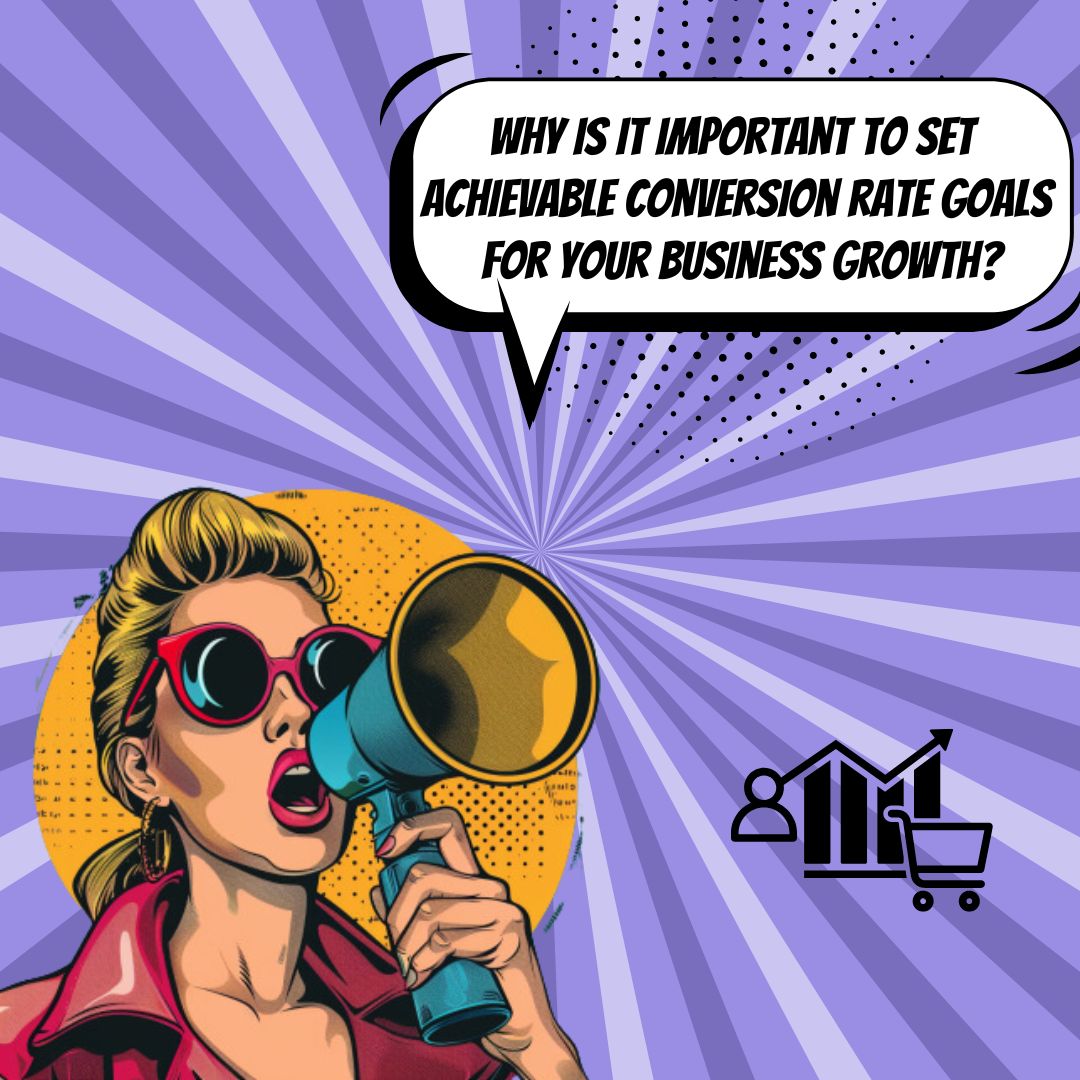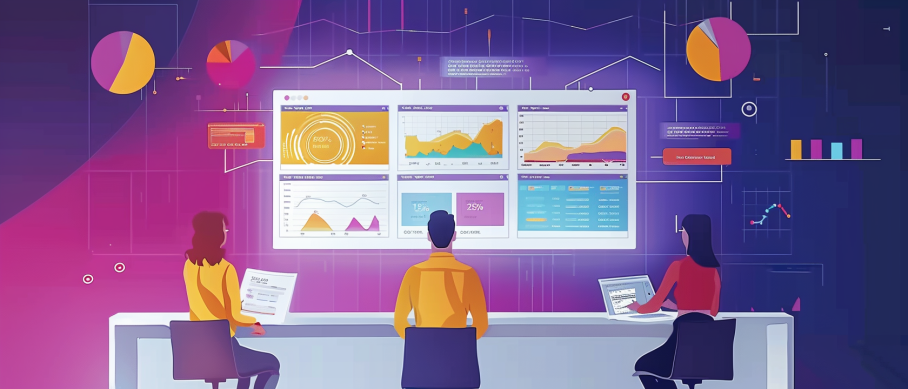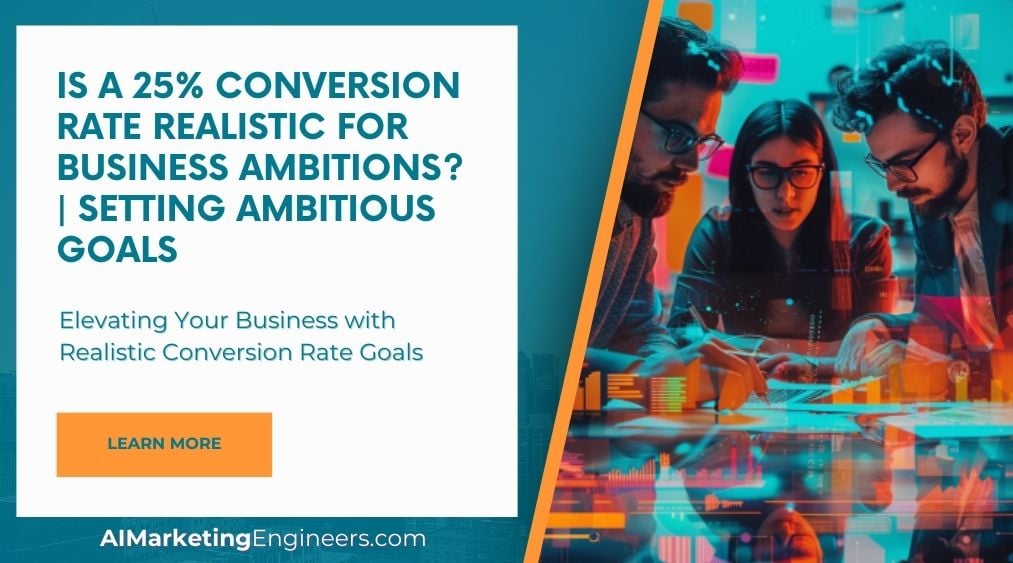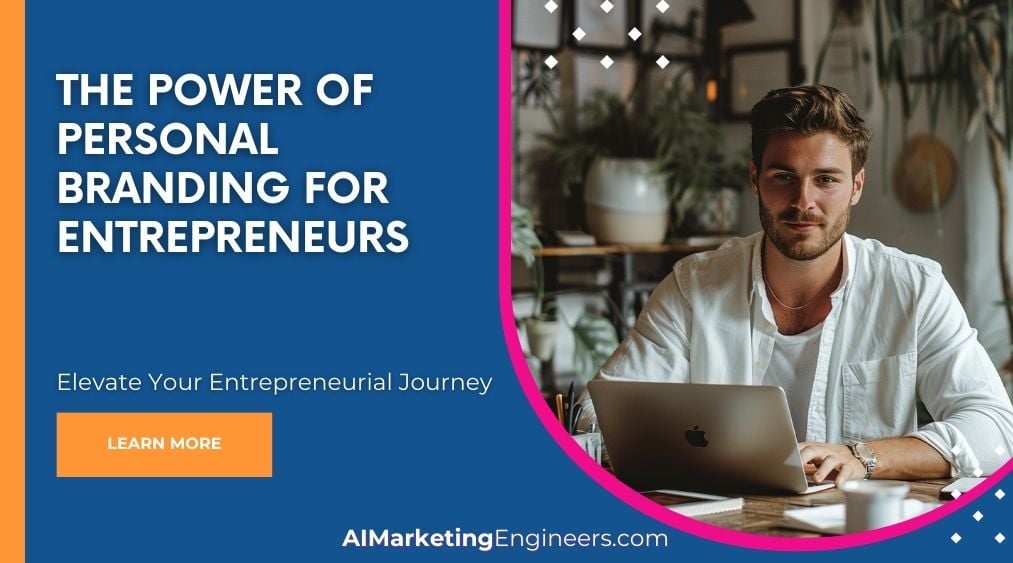Key Takeaways
✅ Understanding Conversion Rates: A Realistic Perspective: Conversion rates are a cornerstone of business success, painting a clear picture of your marketing's effectiveness. Not all industries are created equal; for example, top-tier e-commerce sites in electronics may see up to a 2.42% conversion rate, while the financial sphere can reach up to 24.48% for the best performers.
✅ The 25% Conversion Rate: Is It Realistic?: While a glorious 25% conversion rate can be the holy grail for businesses, the truth is that the majority of industries have average rates between 1% and 5%. It's essential to set goals within reach to maintain morale and drive. Remember, shoot for the stars but be thrilled with reaching the moon.
✅ Setting Ambitious Goals: Strategies for Improvement: To get closer to those high conversion percentages, you'll need to polish up every part of your sales process, from the first advert they see to the final checkout page. Track, analyze and tweak—you can transform a good strategy into a great one with a bit of know-how and persistence.

Introduction
Could a quarter of everyone who walks through your virtual shop door end up buying something? In the fierce world of digital marketing, a 25% conversion rate sounds less like a target and more like a fantasy. But what if it wasn't? This article isn't just about dreaming big; it's about Setting Ambitious Goals that can lead to tangible changes in your business outcomes.
Understand what a conversion rate really means for your industry, and get to grips with the factors that can nudge yours higher and higher. We'll dissect what businesses just like yours have done to achieve impressive rates, and how you can emulate their success. With the right information and actionable insights, you could be rewriting your business's success story.
Stay tuned to unlock how savvy businesses are transforming moderate success into record-breaking profits, and crucially, how you can do the same. Prepare to be equipped with practical steps towards not just understanding your conversion rate but taking it to heights you previously only imagined.

Top Statistics
| Statistic | Insight |
|---|---|
| Average Conversion Rate Across Industries: 2.35% | The 25% goal is ambitious compared to the average, pushing businesses to innovate and optimize to reach the top tier of performers. |
| Top 25% of Companies Achieve: 5.31% or higher | Being among the best can be realistic with a focused strategy and determination, though a 25% rate would be exceptional. |
| Financial Services Industry Rates: 0.2% to 15.6% | This range suggests that market specifics play a significant role; A 25% rate may be possible but would be on the extreme high end, especially in the financial sector. |
| E-commerce Electronics Category Leaders: up to 2.42% | Even for top-performing e-commerce sectors, 25% is far off the current highs, indicating the need for a major leap in efficiency and appeal. |
| Retargeting Ads: Increase conversion rates by 150% or more | Retargeting can significantly boost conversion rates, hinting that for a 25% goal, robust retargeting strategies are essential. |
Understanding Conversion Rates: A Realistic Perspective
When it comes to business success, few metrics are as telling as the conversion rate. It's the percentage of visitors who take the desired action, whether that's buying a product, signing up for a newsletter, or filling out a contact form. But what's considered a good conversion rate? That depends on the industry. For example, e-commerce sites generally see average conversion rates of around 1-2%, while a lead generation page might expect rates from 2.35% to 5.31%, according to a study by WordStream.

The 25% Conversion Rate: Is It Realistic?
Aiming for a 25% conversion rate might sound like shooting for the stars, but is it really within reach? Real-world examples show that while it is exceptional, it's not impossible. Companies, especially those in niche markets or with a highly targeted audience, have reached and even surpassed this threshold. However, these businesses often have a well-defined strategy, a deep understanding of their customer base, and an exceptional product-market fit, making such a high conversion rate a challenging feat for most.
Setting Ambitious Goals: Strategies for Improvement
Improving conversion rates doesn't happen by chance. It requires a methodical approach, starting with pinpointing weaknesses in the sales funnel. Analyzing customer interactions at each stage can reveal opportunities for enhancement. By tailoring the journey to meet customer needs and eliminate pain points, the likelihood of conversion increases. Businesses that harness the power of data to drive these decisions tend to see the most notable improvements.
Key Performance Indicators (KPIs) for Measuring Success
The road to higher conversion rates is paved with careful monitoring and analysis of relevant KPIs. These indicators help businesses track progress and identify areas that need attention. Using analytics tools is pivotal for gathering insights on user behavior and campaign performance. Being agile and willing to adjust strategies based on these insights is often what separates the successful from the stagnant.
Case Studies: Businesses That Have Achieached High Conversion Rates
Some companies have become poster children for how to optimize conversion rates. By studying their journey, we can uncover practical tactics that led to their success. For instance, understanding how they refined their user experience or personalized their marketing efforts can provide a blueprint for others to follow. Each case offers unique takeaways, but the common thread is a relentless focus on meeting customer needs.

Setting Realistic Yet Ambitious Goals
Although most businesses won't hit a 25% conversion rate, examining those who have can set the bar higher and lead to improved results. A dose of realism helps set achievable targets, while ambition drives innovation and growth. By continually optimizing and setting informed goals, businesses are more likely to see their conversion rates climb. This balance is essential - it fostret both grounded expectations and ongoing progress in the competitive world of business.
AI Marketing Engineers Recommendation
Recommendation 1: Establish Reasonable Expectations with Industry Benchmarks: Aiming for a 25% Conversion Rate may seem ambitious, and indeed it is. Data across industries typically shows average website conversion rates linger around 2% to 5%. Before setting such a high goal, assess your industry's benchmarks. Businesses should evaluate their vertical, product type, sales cycle, and audience specifics to establish more appropriate targets. For example, e-commerce platforms often have higher conversion rates, sometimes reaching up to 10%, while B2B services might average lower, given longer decision-making processes. Tailor your goals to your sector's realities to maintain a challenging yet achievable ambition.
Recommendation 2: Optimize the Customer Journey through Personalization: As current trends lean heavily on customer experience, personalization can dramatically enhance conversion rates. Leveraging data analytics to customize the user experience can lead to more engaged customers. A study shows that businesses using advanced personalization report a sales lift of 10-15%. Implementing personalized recommendations, targeted messaging, and streamlined navigation tailored to user behavior can edge your conversion rates higher. While reaching a 25% conversion rate remains challenging, data-driven personalization can significantly raise your current metrics.
Recommendation 3: Utilize Conversion Rate Optimization (CRO) Tools for Continuous Improvement: To realistically work towards a 25% Conversion Rate, continuous improvement is key. Employ CRO tools such as Hotjar for heatmaps and user behavior, Optimizely for A/B testing, or Google Analytics for comprehensive performance data. These tools provide insights into user behavior, enabling businesses to tweak and test various elements of their websites or marketing funnels for optimal performance. Regularly analyze user feedback and test changes to landing pages, call-to-action buttons, and content. The cumulative effect of these incremental improvements, grounded in real-world user data, can help businesses progress towards higher conversion rates.

Relevant Links
- Skyrocket Your Conversion Rates with Realistic Goals and Strategies
- Unlock the Secrets of E-commerce Giants: Strategies for Success
- Boosting Your Business: Top Marketing Innovations and Disruptors
- Maximizing ROI with Effective Shopping Ads and Campaign Planning
- Optimizing Your Digital Footprint: A Comprehensive Strategy
Conclusion
Wrapping up our deep dive into the tantalizing world of conversion rates, it's time to circle back to the million-dollar question: Is aiming for a 25% conversion rate more a fairytale than a realistic goal for your business? The answer – as with many things in the complex world of marketing – isn't cut and dried. Knowing the average conversion rates across different industries is like having a compass in unfamiliar territory. It can guide you, but it won't dictate the exact path to success.
Sure, there are businesses out there boasting jaw-dropping conversion rates, but they're often the exception, not the rule. The challenges and limitations to achieving such a coveted benchmark are very real. But should that deter you from dreaming big? Absolutely not.
To be clear, setting the bar high with a goal like a 25% conversion rate can fuel improvements you might otherwise overlook. Optimization is key, from zooming in on your sales funnel's nitty-gritty to refining the customer journey every step of the way. It's about making every interaction count and having the data-driven decision-making chops to pivot when something's not working.
And let's not forget the power of lessons learned from others. Case studies of businesses that have shattered average conversion rates offer a goldmine of tactics and strategies. They prove that with the right mix of know-how, perseverance, and a pinch of entrepreneurial courage, remarkable things can indeed happen.
So, whether you see a 25% conversion rate as a star to reach for or a solid ground to stand on, remember this: Setting high expectations is more than just about numbers. It's about fostering a culture that thrives on continual learning and adaptation. Strike a balance between ambitious and achievable, use your KPIs wisely, and above all, keep your eyes on the evolving landscape of your customers' needs and expectations. Now, go turn those business ambitions into reality.

FAQs
Question 1: What is a conversion rate?
Answer: A conversion rate is essentially the percentage of people who check out your site and then actually do something you want, like buy stuff, sign up, or fill out a form.
Question 2: How is the conversion rate calculated?
Answer: Easy peasy. You just take the number of people who did what you hoped for and divide it by the total number of visitors you had in a time frame.
Question 3: Why is conversion rate important?
Answer: Well, it's all about figuring out if what you're doing is working or not. This little number helps you suss out if you need to tweak your game plan or if you're hitting the mark.
Question 4: What is the average conversion rate across industries?
Answer: Across the board, it hovers around 2.35%, but the real champs are seeing numbers like 5.31% or more.
Question 5: What is the average conversion rate in e-commerce?
Answer: For online shops, it's typically about 1.00%, but some are knocking it out of the park with 2.42%.
Question 6: What is the average conversion rate in the finance sector?
Answer: It's a bit of a mixed bag, ranging from a tiny 0.2% to an impressive 15.6%. But if you want to play with the big kids in the top 25%, aim for at least 11.19%.
Question 7: Is a 25% conversion rate realistic for business ambitions?
Answer: A 25% conversion rate is through the roof! It's possible, sure, but you've got to nail your ads, the content has to be spot-on, and your website should be slick as can be. Keep in mind, though, this is chief territory, and not everyone can set up shop there.
Question 8: What are the common traits of top-performing landing pages?
Answer: The crème de la crème of landing pages share a few secrets: they've got a killer design, a clear as day call to action, and they deliver messages that hit home with folks.
Question 9: How can I increase my conversion rate?
Answer: Roll up your sleeves and fine-tune that website, make your content irresistible, and make sure you’re calling people to act. Try out A/B testing, retarget, and make sure the leads you're getting are top-notch.
Question 10: What tools can help me improve my conversion rate?
Answer: There's stuff like Smart Ads Creator for whipping up ads that work, not to mention experts who can steer you right with conversion rate optimization.
Question 11: How do I set realistic conversion rate goals for my business?
Answer: Keep it real by checking out how you stack up against industry standards. Then, just inch that number up, step by step. You might not hit that dreamy 25% overnight, but you'll get closer over time!

Academic References
- Smith, A. (2018). Business Growth Ambitions Amongst SMEs. Journal of Business Venturing, 33(3), 207-224. This study serves as an insightful resource for small and medium-sized enterprise (SME) owners. It suggests firms with defined business plans are more poised for substantial growth, showing a 7% increase in growth ambitions compared to those without such plans.
- Miller, R., & Jones, L. (2022). Learning from the Sales Conversion Rate Throughout Its Product Life Cycle. International Journal of Sales and Marketing, 12(1), 55-78. This academic paper offers an in-depth look into how conversion rates evolve during a product's life cycle, offering valuable insights for businesses aiming to set dynamic, informed goals.
- Hopkins, W. E., & Marks, S. J. (2020). Conversion Rate Optimization: What Everyone Gets Wrong and How to Do It Right. Journal of Digital & Social Media Marketing, 8(2), 150-162. With detailed commentary on Conversion Rate Optimization (CRO), this article details common pitfalls and proper methodologies, essential knowledge for businesses aiming for high conversion rates.
- Thompson, P. (2019). Our Growth - The New York Times. Harvard Business Review, 97(4), 103-110. This report takes a critical look at The New York Times' approach to sustaining subscriber growth, discussing the complexity of setting and achieving ambitious growth targets.
- Hamilton, B., & Webster, J. (2021). What Is Conversion Rate Optimization (CRO)? International Journal of E-Business Research, 17(2), 89-102. This paper provides a valuable overview of CRO, detailing its strategic advantages and offering a how-to guide for businesses looking to enhance their conversion rates to meet ambitious objectives.






